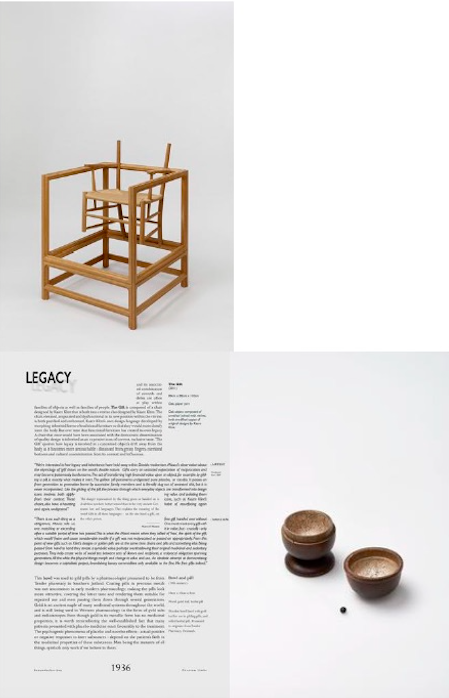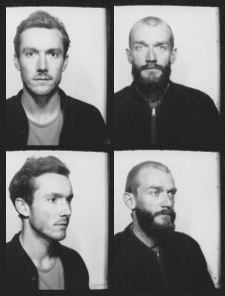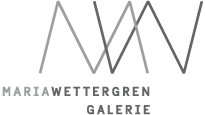
LEGACY
LEGACY and its associated combination of rewards and debts are often at play within families of objects as well as families of people. The Gift is composed of a chair designed by Kaare Klint that is built into a vitrine also designed by Kaare Klint. The chair, elevated, amputated and dysfunctional in its new position within the vitrine, is both pacified and enthroned. Kaare Klint’s own design language developed by morphing inherited forms of traditional furniture so that they would more closely meet the body. But over time that functional furniture has created its own legacy. A chair that once would have been associated with the democratic dissemination of quality design is inherited as an expensive icon of correct, exclusive taste. ‘The Gift’ queries how legacy is involved in a canonized object’s drift away from the body as it becomes more untouchable – distanced from greasy fingers, oversized bottoms and cultural contamination from its context and influences.
A R T I S T
“We’re interested in how legacy and inheritance have held sway within Danish modernism. Mauss’s observation about the etymology of ‘gift’ draws on the word’s double nature. Gifts carry an unstated expectation of reciprocation and may become poisonously burdensome. The act of transferring high financial value upon an object, for example by gilding a pill, is exactly what makes it inert. The golden pill perseveres undigested: pure placebo, or nocebo. It passes on from generation to generation borne by successive family members and is literally dug out of ancestral shit, but it is never incorporated. Like the gilding of the pill, the process through which everyday objects are transformed into design icons involves both applying value and isolating them from their context. These icons, such as Kaare Klint’s chairs, also have a haunting habit of resurfacing again and again, undigested.”
M U S E U M
“There is no such thing as a free gift handed over without obligations, Mauss tells us. One must meet every gift with one matching or exceeding it in value, but – crucially – only after a suitable period of time has passed. This is what the Maori meant when they talked of ‘hau’, the spirit of the gift, which would fester and cause considerable trouble if a gift was not reciprocated or passed on appropriately. From this point of view gifts such as Klint’s designs or golden pills are at the same time chairs and pills and something else. Being passed from hand to hand they amass a symbolic value perhaps overshadowing their original medicinal and sedentary purposes. They help create webs of social ties between sets of donors and recipients, a reciprocal obligation spanning generations. All the while the physical things morph and change in value and use. An idealistic attempt at democratising design becomes a capitalistic project, brandishing luxury commodities only available to the few. No free gifts indeed.”
“The danger represented by the thing given or handed on is doubtless nowhere better sensed than in the very ancient Germanic law and languages. This explains the meaning of the word Gift in all these languages – on the one hand a gift, on the other poison.”
MARCEL MAUSS
A R T E F A C T D E T A I L S
Bowl and pill
(19th century)
10cm x 10cm x 8cm
Wood, gold leaf, herbal pill
Wooden bowl lined with gold leaf for use in gilding pills, and rolled herbal pill. Presumed to originate from Tønder Pharmacy, Denmark.
This bowl was used to gild pills by a pharmacologist presumed to be from Tønder pharmacy in Southern Jutland. Coating pills in precious metals was not uncommon in early modern pharmacology; making the pills look more attractive, covering the bitter taste and rendering them suitable for repeated use and even passing them down through several generations. Gold is an ancient staple of many medicinal systems throughout the world, and is still being used in Western pharmacology in the form of gold salts and radioisotopes. Even though gold in its metallic form has no medicinal properties, it is worth remembering the well-established fact that many patients presented with placebo medicine react favourably to the treatment. The psychogenic phenomena of placebo and nocebo effects – actual positive or negative responses to inert substances – depend on the patient’s faith in the medicinal properties of these substances. Man being the measure of all things, symbols only work if we believe in them.”

The Gift
2011
Oak
80 x 80 x 110 cm
Exhibition Matter Out Of Place
Galerie Maria Wettergren

The Gift
2011
Artwork ; Framed text ; Diasec print

The Gift
2011
Oak
80 x 80 x 110 cm

The Gift
2011
Diasec print
68 x 48 x 3 cm

The Gift
2011
Detail
Oak
80 x 80 x 110 cm

The Gift
2011
Detail
Oak
80 x 80 x 110 cm

The Gift
2011
Detail
Oak
80 x 80 x 110 cm


‘The work of the collaborative artist practice, benandsebastian, teeters on a cusp between designed physicality and intangible theories of the mind. Trained in architecture and theoretically versed, their sculptures take on elaborate mechanics and boast intricate detailing, yet speak to vast philosophical and sociological systems. It is impossible to concretely anchor their work, an elusiveness made evident in their recent exhibition at the Designmuseum Danmark, ‘Phantom Limbs’.
Embedded directly within the permanent collection and specifically paired with unexpected inventory from Copenhagen’s Medical Museum, National Museum and the attics of Designmuseum Danmark, their work becomes not only the sculptures on display, but the myriad relationships made between context and object, between body and limb. Evoking the medical sense of phantom limbs, where an amputee still feels the presence of the absent limb, benandsebastian navigate the museum context and call into question the assumed wholeness we expect, perceive and viscerally feel.’
Cassandra Edlefsen Lasch,
independent curator, DAMn magazine, issue 33


